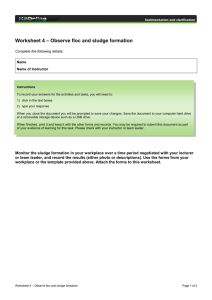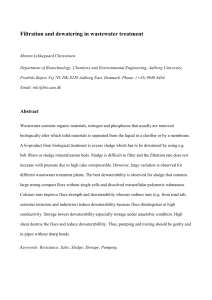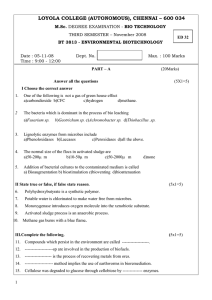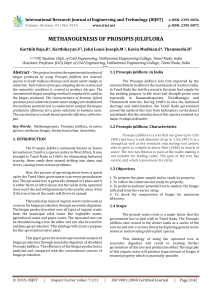Marine Bioenergy Economic Systems Analyses for Novel Marine Energy Production Strategies MAT ‘09
advertisement
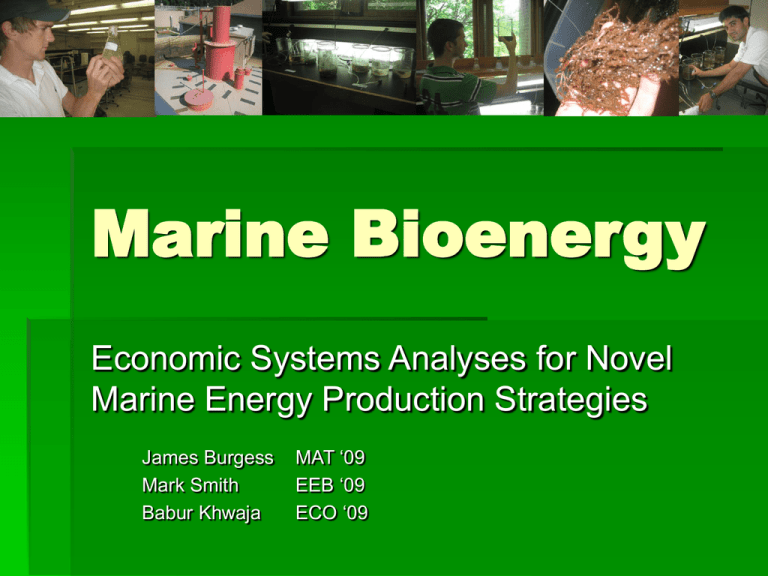
Marine Bioenergy Economic Systems Analyses for Novel Marine Energy Production Strategies James Burgess Mark Smith Babur Khwaja MAT ‘09 EEB ‘09 ECO ‘09 Motivation Food: Ocean production facilitates scalability, without interference in food markets. Climate: Provides opportunities for Carbonneutral or Carbon-negative energy production based on fixation of atmospheric CO2 Efficiency: Rapid, continuous growth rates outperform terrestrial crops in primary productivity Technical Considerations Species Selection Micro-algae vs. Macro-algae Benthic vs. Pelagic Production Method Terrestrial vs. Ocean based Nutrient delivery Conversion Method Biochemical vs. Thermochemical Desired energy product Previous Efforts Focus on microalgae for lipid production Pros: Easy to Culture Easier genetic manipulation More valuable energy product Cons: Harvest Cost Cost of Containment Our Strategy Focus on production cost reduction rather than product value Avoid centrifugation/floculation costs Avoid engineering cost of growth container Utilize waste stream as nutrient source Accept low product value of macroalgae System Architecture Select Feedstock Implies Production Method Nutrient Provision from Sludge Harvesting by Kelp Mowers Digestion into Biogas Biogas Cleanup and Distribution Experimental Program Empirically test key assumption of feasibility of sludge application Sludge from Hightstown bio-digester Difficulties in establishing Sargassum culture Decision Point: replace with reasoning from literature analogy Results Best Case: Sargassum Ocean Production Biogas Production with Electricity Cogeneration System highly dependent on revenue from sewage sludge tipping fees Resultant limit on scalability Scales to waste market Relationship Between Sludge Tipping Fee and NPV Maximum Scalability NPV ($ Million) 150 100 50 ~ 1% Gross US Energy ~ 4% US Natural Gas 0 0 5 10 15 20 25 30 -50 -100 Sludge Tipping Fee ($/tonne) Assumes 10,000 hectare farm, $30 carbon tax Key Parameters Systematic sensitivity analysis yields following rank order of parameter importance 1. 2. 3. 4. 5. Sludge Tipping Fee Farm Size Harvest Cost Methane Production Rate Carbon Tax Conclusions Our research supports the finding that Sargassum cultivation for biomethane production could be viable given: Moderate sewage sludge tipping fees Dramatic cost reduction in harvesting system Higher methane conversion efficiencies We conclude that this project is not currently worth pursuing further due to the difficulty of meeting the above conditions Thank You! Key Advisors and Mentors Tom Kreutz Nick Bennette Damian Carrieri Chuck Dismukes Steve Pacala Funding Support PEI EEB Department Explorer’s Club Questions?


